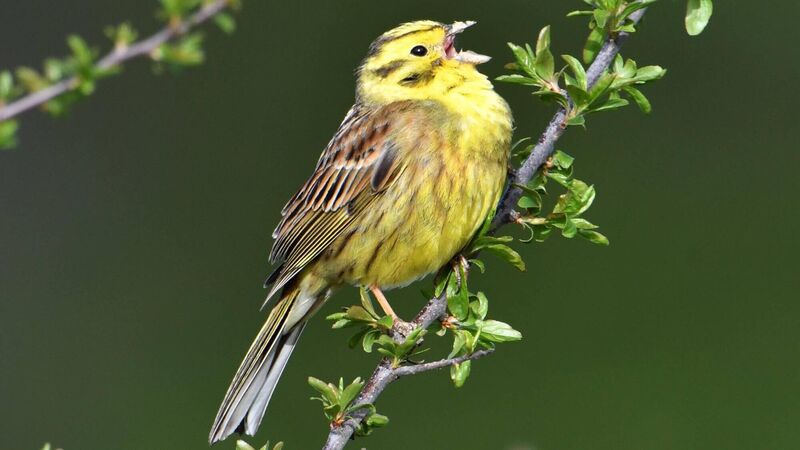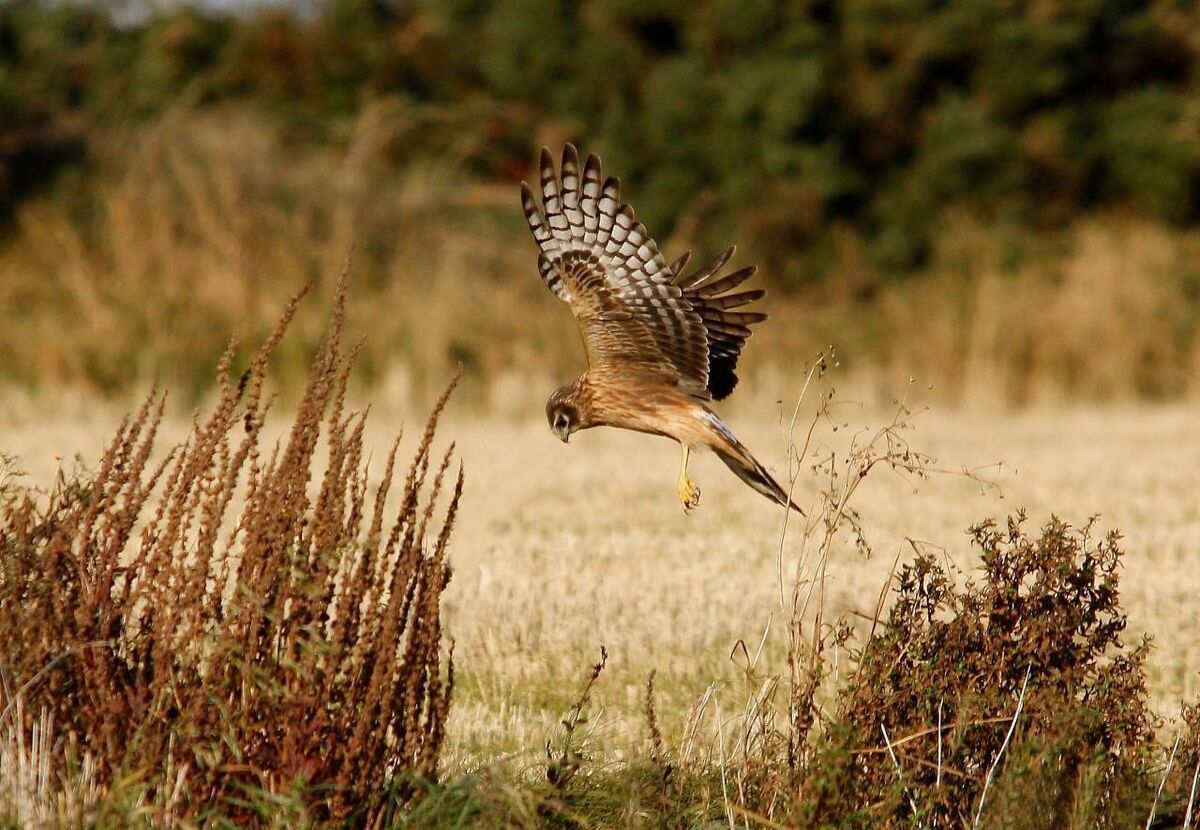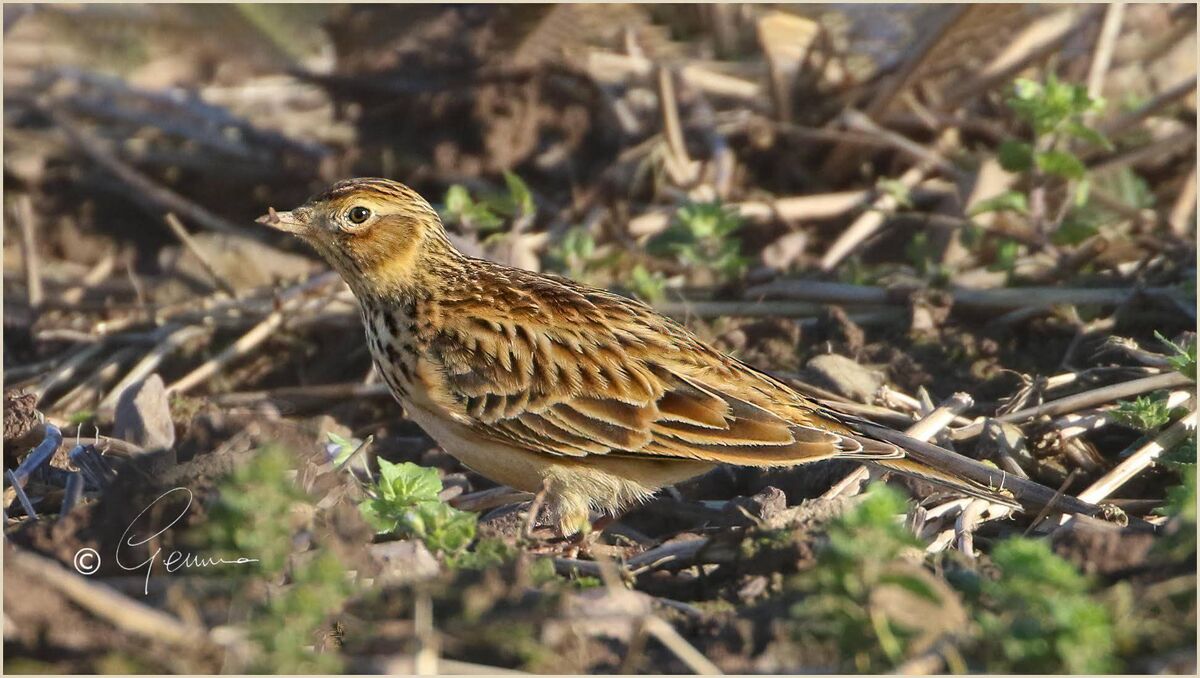Anja Murray: New farm rules pose extinction risk to threatened farmland birds

Yellowhammer has declined by an estimated 58% over the past 20 years. It is now a Red Listed species, categorised in the highest level of conservation concern. Picture: Richard T Mills
Yellowhammers are stunning little birds. Their bright yellow plumage makes the males stand out in summer, vivid like no other bird here. In winter, males develop duller plumage though they are still noticeably yellow. In spring and summer they sing loudly from a perch in the top of a tree or hedgerow, a distinctive call that people say sounds like ‘a little bit of bread and no cheese’.
Yellowhammers were once a widespread and familiar farmland bird, thriving among the plentiful resources of mixed farms. In autumn and winter, they eat the seed heads of large grasses and grains that get fortuitously scattered the among the cereal stubble in arable fields. In summer, when feeding a brood of chicks, yellowhammers eat insects too, though for most of the year they are sustained by grains.
For aeons, most farms across Ireland would grow some grains such as barley, wheat and oats as well as keeping livestock. These grains were grown to be eaten by us and by farm animals, as well as for malting and distilling. Since the 1970s and 80s, however, agricultural intensification and specialisation has seen the demise of mixed farms and a dramatic reduction in the growing of these crops across Ireland. Only in parts of the east, southeast and south of the country are cereals grown in any quantity, as well as a few pockets of Donegal. Grains are now mostly imported from further afield instead.
As farms across the country have shifted from mixed farming to livestock production, yellowhammers and other seed-eating farmland birds have been severely impacted. The breeding range of Yellowhammer has contracted by an estimated 58% over a 44-year period. It is now a Red Listed species, categorised in the highest level of conservation concern.
Yellowhammer is one of only two resident bunting species remaining in Ireland, also referred to as the ‘yellow bunting’. The other bunting here is the Reed Bunting. A third bunting species, the Corn Bunting, was once a widespread resident in lowland agricultural areas, feeding on grain like the yellowhammer. But Corn bunting were not able to endure the decline in cereal cultivation and went extinct as a breeding species in Ireland in the 1990s.

Where cereal crops are grown, they provide important habitat for many other farmland birds too. After the harvest, stubble is normally left behind for the winter and the soil is littered with seeds that have dropped to the ground. These sustain dozens of bird species through winter when food is scarce. Skylark, Golden Plover, Lapwing, Linnet, Snipe, Pied Wagtail, Meadow Pipit and Hen Harrier all use winter stubble for crucial sustenance. Many of these species are in serious trouble, and research has shown that this food and cover in winter is a significant factor in the breeding success come spring.
For some years now, cereal farmers have been encouraged to retain winter stubbles to provide grain for wildlife. Some farmers provide ‘sacrificial crops’ or ‘wild bird cover’ which can supplement food supplies for seed-eating birds. These measures also help to sustain raptors such as owls, kestrels and hen harriers in winter, as they hunt over fields of winter stubble.
Last summer, in a move that caused much surprise, new regulations were introduced by the Government requiring arable farmers to plough winter stubble into the ground in an effort to green up the fields so as to reduce excess nutrients leaching from the soil into waterways. Considering the context that nearly half of Irish river sites have nitrate concentrations that exceed legal limits, and that the levels of nutrient pollution are increasing rather than lessening, measures to curb nitrate pollution are indeed necessary.
However, the new requirement to plough winter stubble has been criticised by BirdWatch Ireland as a “a rushed, blunt national level instrument with no mitigation measures in place and risks further blows to already declining farmland bird populations” — and also for failing to tackle the source of the problem, namely the “overloading of organic and chemical fertiliser on farmland”, which includes dairy as well as arable land.
These changes are potentially disastrous for some of the farmland birds that rely on winter stubble. Without due care, this may inadvertently cause more of our cherished native birds, including Yellowhammer, to follow the sad plight of the Corn bunting.

In an attempt to mitigate the impacts of the change in regulations, survey work has been conducted this winter in east Cork, where arable farming is still widely practised and Yellowhammers are holding out. The survey is being carried out by BirdWatch Ireland and supported by Irish Distillers and the Leader Programme through South East Cork Area Development, with local assistance from Teagasc and Dairygold. The research will inform what measures can be implemented to maintain these birds at local level, though experts have again highlighted that the requirement for tillage farmers to reduce winter stubbles will likely put more pressure on already declining species at a time when exactly the opposite is needed — positive conservation measures to support declining populations.
Knowing what measures are needed to support declining birds such as Yellowhammer, Skylark, Golden Plover, Lapwing, Linnet, and Hen Harrier is often not the problem; implementing conservations actions is where the challenge lies. In this case, the farmers in east Cork who have been participating in the survey have been supportive of the survey and research work. Everyone on the team is keen to emphasise that most arable farmers in this area don’t want to lose these much-loved farmland species. And yet the survival of yellowhammers now depends on continued access to winter stubble, which is being severely curtailed by the new regulations.
The ongoing survey work demonstrates how positive outcomes result from collaboration between farmers and ecologists with support from agencies and food producers too. Now it is time for those who make the regulations to step up and implement the suite of solutions we know are needed to improve both water quality and the plight of our threatened farmland birds.







